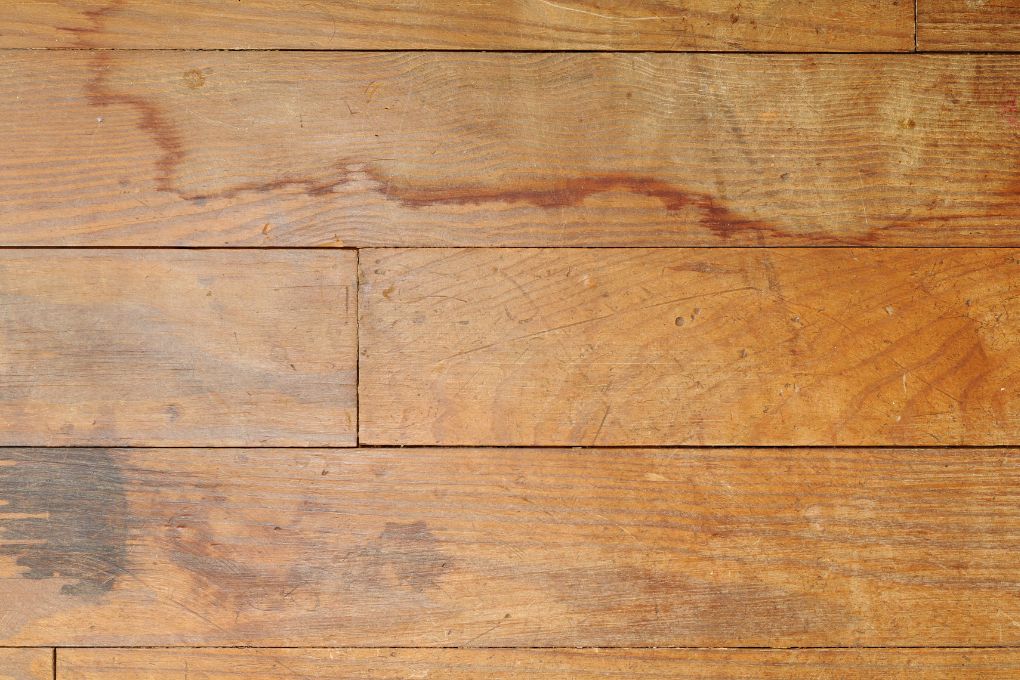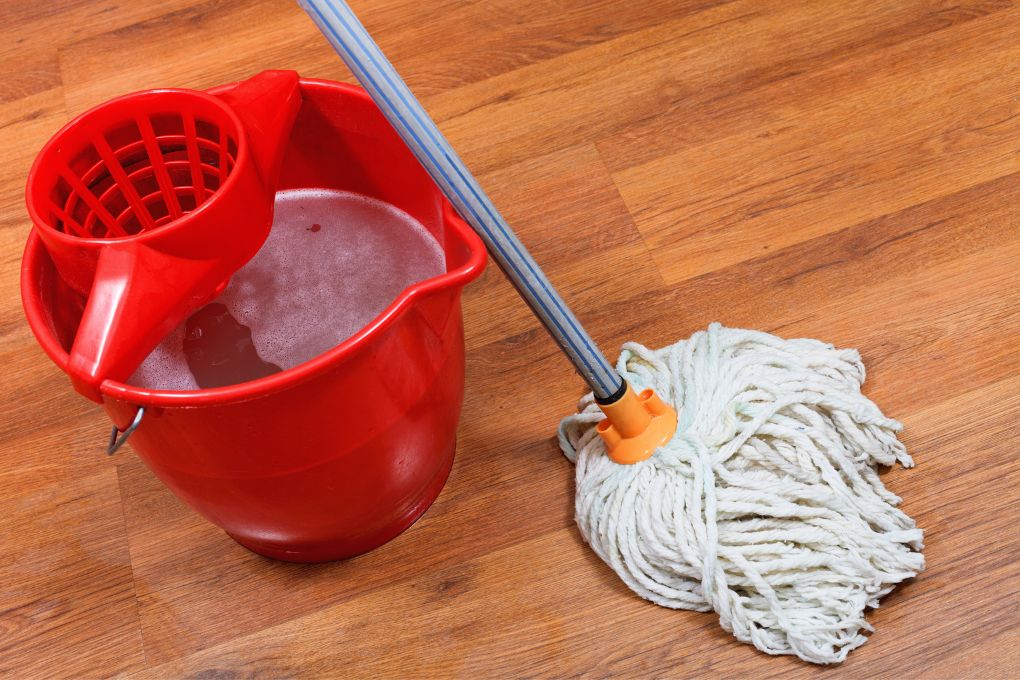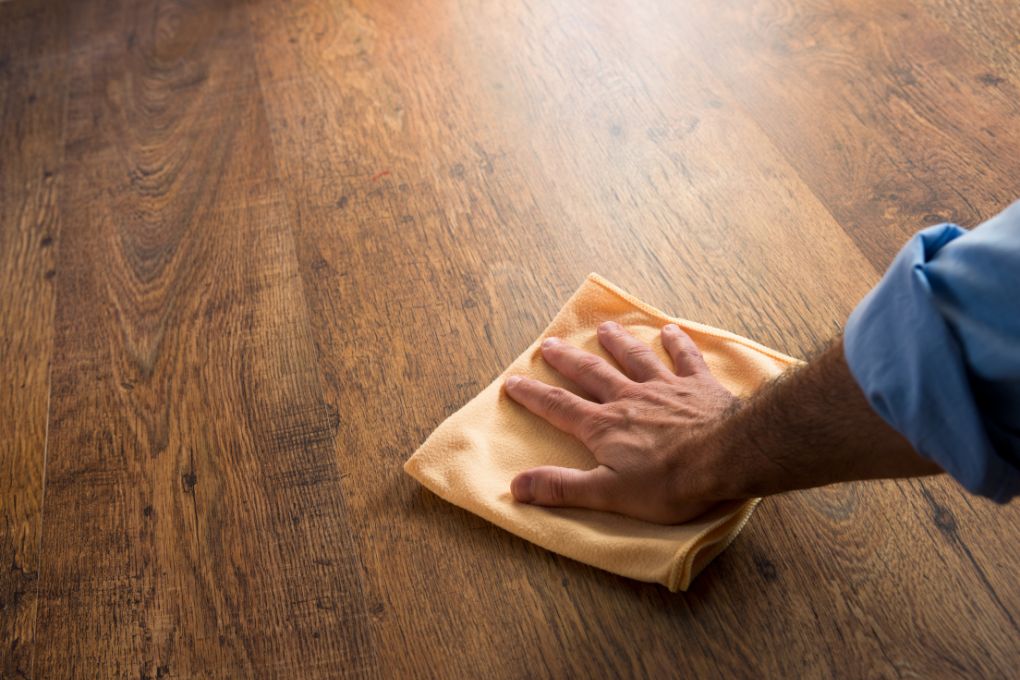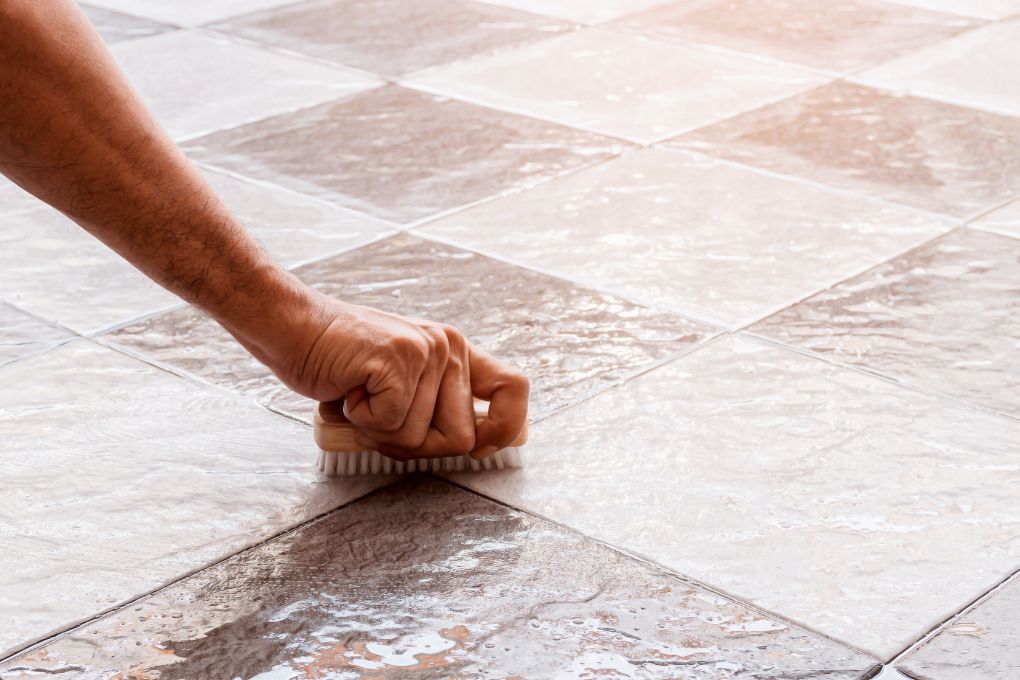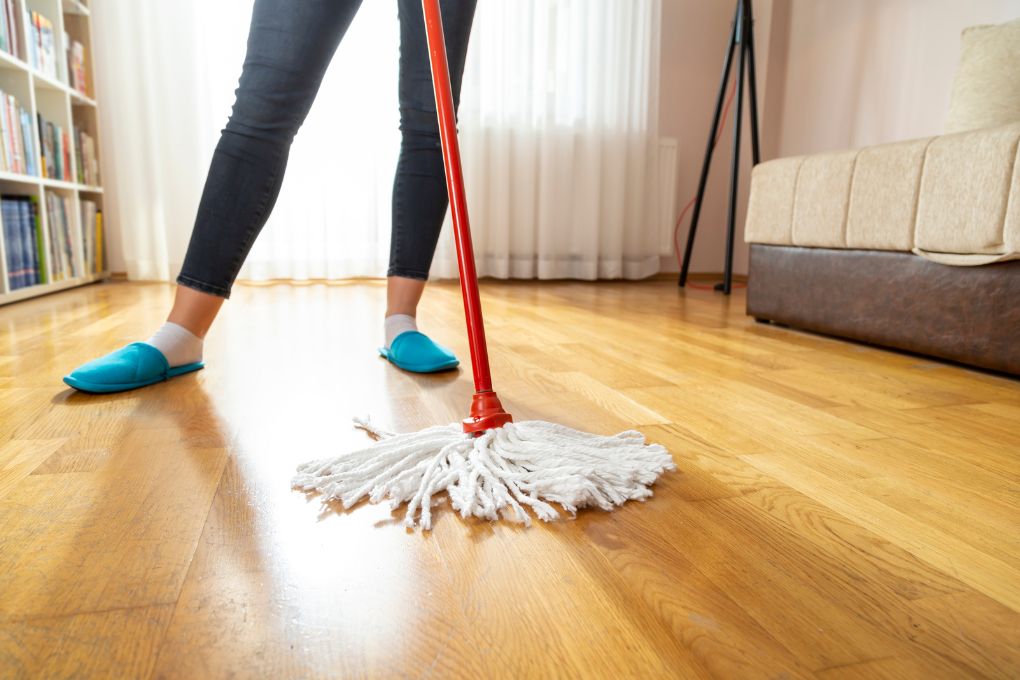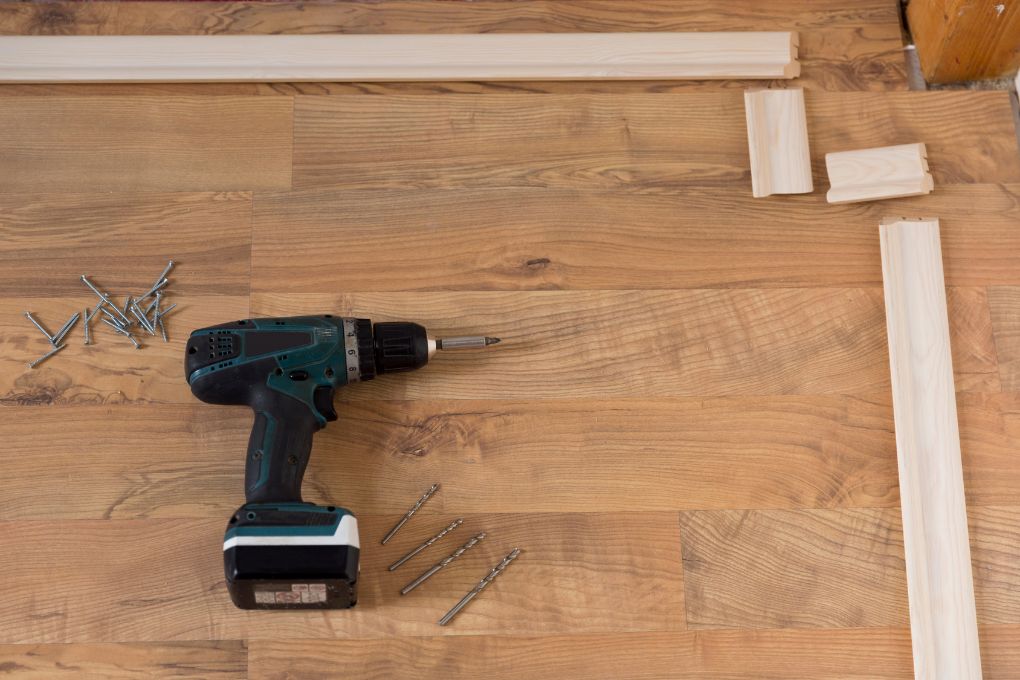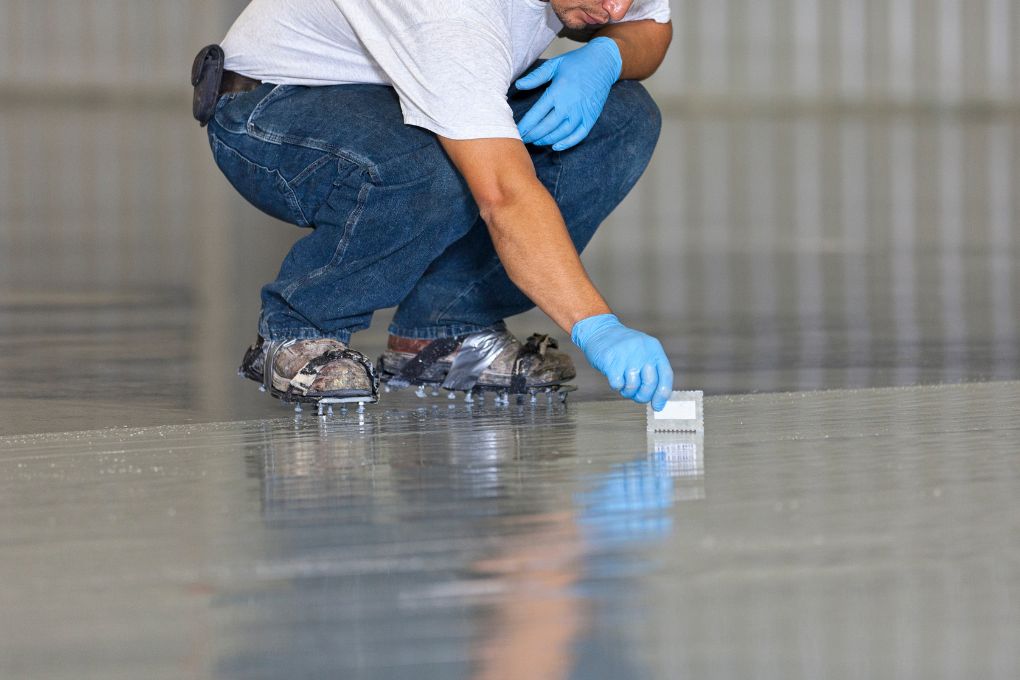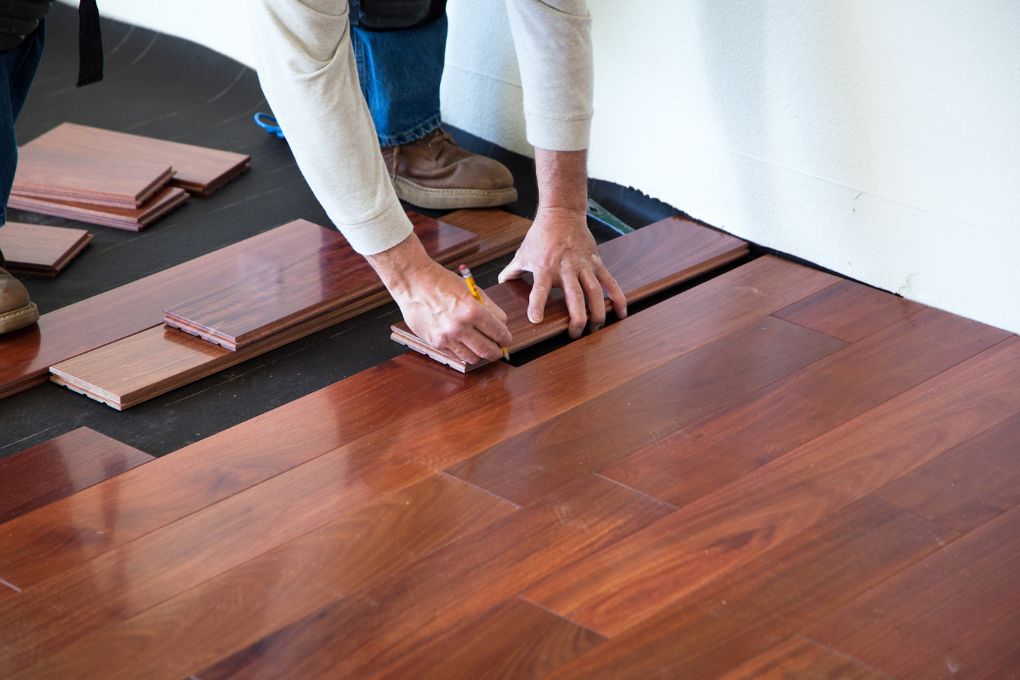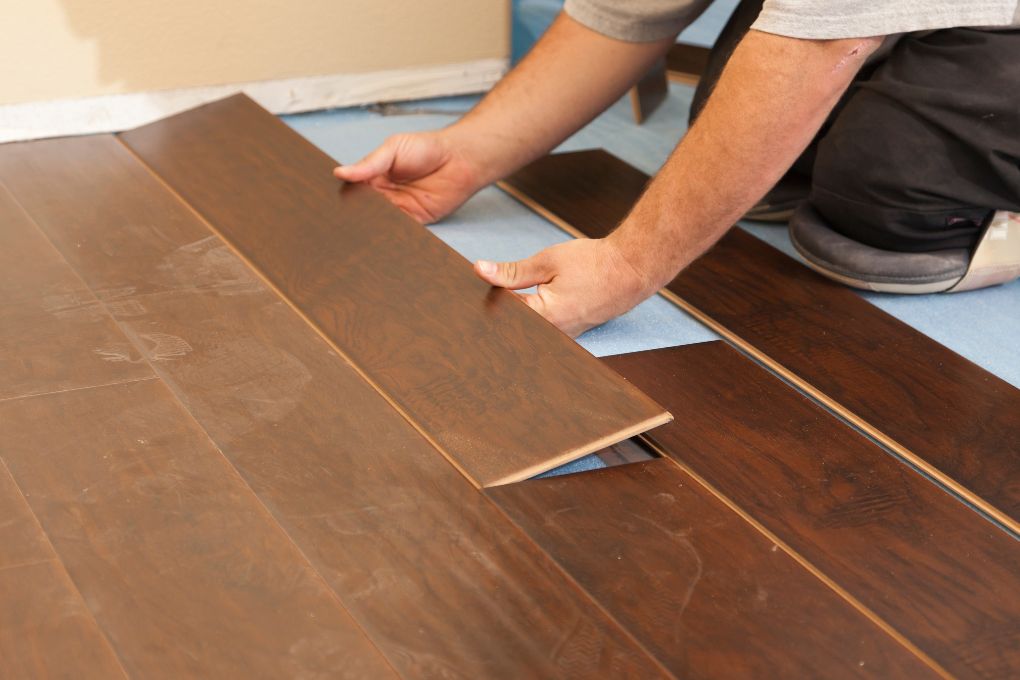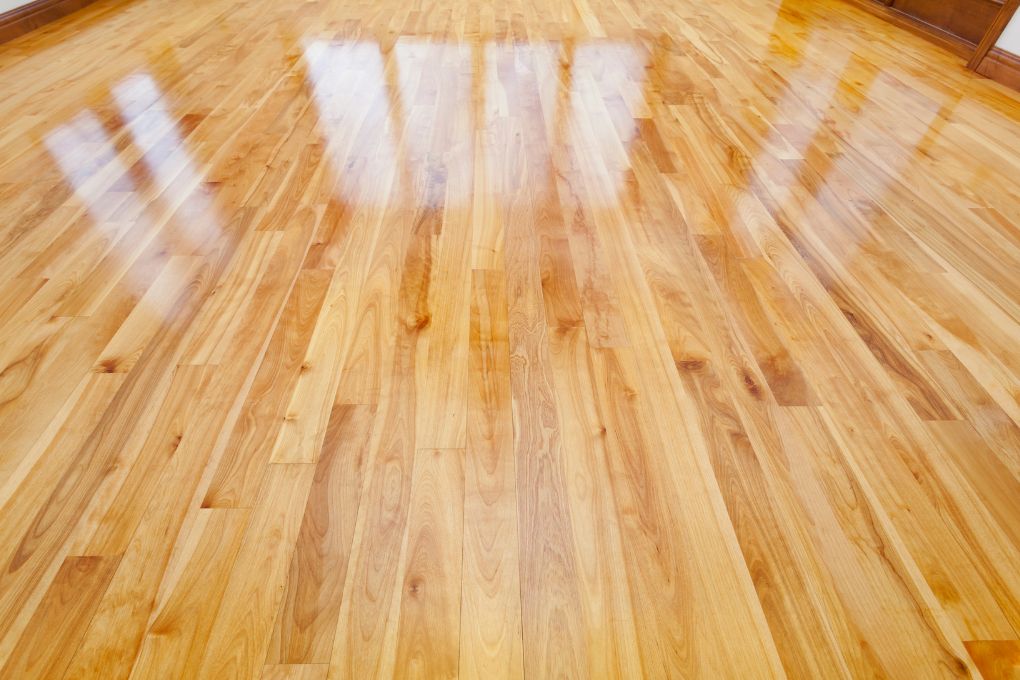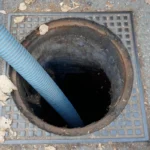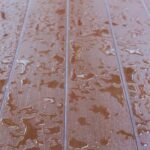Many homeowners and interior designers currently favor wood flooring for its trendy appeal as hardwood floors are renowned for their exceptional qualities, although they do have a vulnerability to water, which can cause significant damage even with minimal exposure.
Dealing with a substantial amount of water on your wood floors can be a cause for great concern. Water damage is a prevalent source of anxiety for homeowners due to the potential harm it can inflict on various aspects of a home. Specifically, untreated water damage to hardwood floors can lead to warping, mold growth, and a significant reduction in property value. Fortunately, there are effective methods for repairing water-damaged wood floors.
How Long Does It Take to Cause Hardwood Floor Water Damage?
The timeline for water to cause damage to hardwood floors varies depending on the location of the water exposure. Generally, the top surface of the boards is treated to resist minor spills. However, when dealing with a substantial volume of water, it can seep between the boards and penetrate underneath. The untreated sections of the boards will absorb the water and expand.
Indicators of water damage on hardwood floors can be evident in several ways. One common sign is the presence of an unusual odor emanating from beneath the floorboards. This odor could suggest the presence of moisture or mildew growth waiting beneath the surface of the wooden floors.
Another noticeable sign to watch for is the phenomenon known as “crowning” in your hardwood flooring. Crowning typically occurs when the moisture content is higher at the top surface of the floorboards than at the bottom. This condition can arise due to direct exposure to water or sustained high moisture levels.
It’s crucial to act promptly in such cases and seek the expertise of a professional to assess the extent of the damage before starting any repair efforts.
Related: How to Fix Bathtub Leaks
How to Fix Water Damaged Hardwood Floors?
In the event of a significant spill, a roof leak, or a burst pipe in your home, which necessitates the repair of water-damaged hardwood floors, there are effective measures you can take to mitigate the extent of the damage and possibly prevent further harm.
Identify the Water Source
The initial and crucial step in addressing hardwood floor repair water damage is to pinpoint and eliminate the source of the water intrusion. Before initiating any drying or emergency water cleanup efforts, it’s imperative to take the following actions:
Locate Leaks: Inspect your surroundings for signs of leaks, which can include dripping water, wet spots on ceilings or walls, or visible pipe damage. Identify from where the water is leaking and fix it quickly.
Check for Burst Pipes: Examine your plumbing system for any burst pipes. You need to shut down the water supply to the affected area and if required to entire house in order to minimize the damage. In most severe case, seek professional plumbing repair services.
Roof Inspection: The next step is to check the roofs for potential water leak. If there is any leak or damage found, address it quickly to prevent water from entering your home.
By identifying and addressing the water source, you can effectively halt the inflow of water and lay the foundation for successful mitigation of hardwood floor water damage.
Remove Water
Once you’ve identified and addressed the water source, the next crucial step is to efficiently remove the water from the affected area. Follow these steps for effective water removal:
Mop and Soak: Use a mop and absorbent materials like towels or rags to mop up and soak up any surface water from the hardwood floor. Be sure to remove as much water as possible.
Water Vacuum: If you have access to a water vacuum or wet-dry vacuum, it can be an helpful tool for rapidly extracting water from the floor. These devices are designed to efficiently suction water from surfaces.
Rug and Material Removal: Remove and dry any rugs, carpets, or other wet materials from the affected area. Moisture can be trapped underneath these items, contributing to prolonged water damage.
Important Note: If the water damage is the result of a black water leak (sewage or contaminated water), it is essential to avoid attempting to clean it yourself. Instead, contact a professional water damage restoration service, such SS Water Restoration, to handle the situation safely and effectively. Black water can pose serious health risks, and specialized expertise is required for its emergency cleanup and disinfection.
Clean the Floor
After successfully removing the water from the affected area, the next crucial step is to clean the hardwood floor thoroughly. Follow these guidelines for proper cleaning:
Wood-Safe Disinfectant: Utilize a wood-safe disinfectant to clean the hardwood floor. Ensure that the disinfectant is compatible with wood surfaces to prevent any damage or discoloration. This cleaning step is essential for removing any particulates or contaminants that may have been present in the water.
Preventing Mold Growth: Cleaning the wood floor not only helps remove potential contaminants but also plays a vital role in preventing mold growth. Mold can thrive in damp environments, so a clean and dry surface is essential for mold prevention and you couldn’t need Mold removal experts.
By cleaning the hardwood floor with a suitable disinfectant, you not only maintain its appearance but also contribute to a healthier and mold-free environment.
Scrub the Floor
To ensure a comprehensive cleaning and to eliminate any remaining contaminants, proceed with the scrubbing of the hardwood floor. Follow these steps for effective scrubbing:
Prepare Cleaning Solution: Mix a mild detergent with a compatible disinfectant in a bucket of clean water. This solution is designed to break down and remove any remaining dirt, grime, and contaminants.
Stiff Brush: Use a stiff-bristle brush suitable for cleaning wood surfaces. Begin scrubbing the entire floor as well as any related woodwork, including baseboards, stairs, newel posts, and other wooden elements. It’s important to be thorough in your scrubbing efforts.
Frequent Rinsing: Rinse the brush frequently in the bucket of cleaning solution to prevent the spread of dirt and contaminants. Regular rinsing ensures that you’re effectively removing all traces of dirt, mud, silt, and organic materials that can potentially promote mold growth.
Avoid Excess Water: It’s essential to note that pouring excess water onto the floor should be avoided. Adding more water to the problem can intensify water damage issues. Instead, use the cleaning solution carefully and focus on thorough scrubbing.
By diligently scrubbing the hardwood floor and related woodwork, you’ll not only remove contaminants but also contribute to the prevention of mold growth, helping to restore the affected area effectively.
Dry the Area Thoroughly
After clearing, drying, and cleaning your hardwood floors, the final crucial step is to ensure the area is thoroughly dried. Follow these measures to accomplish effective drying:
Continued Wiping: Continue to wipe and remove any residual moisture from the floors. Pay attention to areas underneath cabinets or appliances, as it’s essential to eliminate water from all corners and crevices to save your wood floors.
Use a Moisture Meter: Employ a moisture meter to verify that the floors are completely dry. This tool can help ensure that no hidden pockets of moisture remain, reducing the risk of further damage.
Dehumidifier: If available, use a dehumidifier to remove excess moisture from the air. Dehumidifiers are effective at reducing humidity levels and expediting the drying process.
Fans and Ventilation: Set up as many fans as possible in the affected area and keep them running. Open windows to promote proper ventilation throughout your home. The circulation of moving air accelerates the drying of the floors, minimizing the likelihood of severe wood damage.
By taking these thorough drying measures, you’re maximizing your efforts to prevent lasting damage to your hardwood floors. At this stage, you’ve done everything you can to mitigate the impact of water damage, and the focus is on ensuring that no lingering damage requires professional attention.
Check for Molds
In the aftermath of addressing water damage to your hardwood floors, it’s crucial to inspect for any signs of mold growth. Here’s how to go about it:
Visual Inspection: Begin by visually inspecting the affected area carefully. Look for any visible signs of mold on the wood surface or within the grain’s pores. Mold can often appear as discolored patches or fuzzy growth.
Prompt Action: If you detect any mold growth, it’s imperative to address it quickly. Mold can spread rapidly and become a more significant issue if left unchecked. Timely intervention is crucial to prevent further mold infestation.
Maintain Fans and Dehumidifiers: Continue to keep your fans and dehumidifiers running throughout the process. Mold thrives in moist environments, so maintaining a dry and inhospitable atmosphere for spore growth is essential. These measures can help discourage mold from taking hold.
Professional Assistance: If you encounter significant mold growth that you are unable to manage yourself, consider seeking the expertise of professionals like those at SS Water Restoration. They specialize in mold remediation and can help address mold issues effectively and safely.
By diligently inspecting for mold and taking preventive measures, you can mitigate the risk of mold infestation and ensure the long-term health of your hardwood floors.
Sand the Floor (Applicable to Crowning or Cupping Floors)
In cases where your hardwood floors exhibit crowning or cupping, you can address this issue through sanding and refinishing. Please note that this step is specific to addressing these conditions. Follow these instructions:
Gently Sand: Use caution and a gentle touch when sanding down the raised edges of the affected floorboards. The objective is to make the floor smooth and flush with the adjacent boards. You can utilize a drum or orbital sander for this purpose. Sand lightly to avoid over-sanding, which can worsen the problem.
Re-Varish and Stain: After sanding, it’s essential to re-varnish the floors to protect the wood and restore its appearance. Additionally, apply a stain that matches the color of the floor to ensure a consistent and appealing finish.
Note on Heavily Cupped Wood: If the wood floor is heavily cupped, it may not be possible to sand it down flat. In such cases, some floorboards might have lifted completely at the ends. If this occurs, you may need to face-nail the affected floorboards back into place to secure them.
By following these steps, you can address crowning or cupping issues in your hardwood floors, restoring their smoothness and appearance. However, keep in mind that this process should be approached with care, especially when sanding, to avoid causing further damage to the floor.
Reset the Boards
In situations where the hardwood floorboards have started popping out or becoming dislodged due to water damage, you can address this issue by carefully resetting them. Follow these steps:
Careful Nail or Screw: Secure the raised edges or loose floorboards by carefully using nails or screws. This process will help to reattach the boards securely to their original positions.
Precision is Key: Ensure that you align the boards accurately and take care not to damage the surrounding wood or create visible marks on the surface. Precision is essential when resetting the boards.
These are the fundamental steps to follow when addressing water-damaged wood floors. Taking action in the early stages, as outlined in the initial steps, can save you both time and money. However, in some cases, the extent of the damage may be too severe, and you may ultimately need to consider replacing the water-damaged floors.
Considering Replacement for Water-Damaged Wood Floors
In certain instances, replacing water-damaged wood floors may become necessary. Here are some key factors to consider when assessing the need for replacement:
Mold Growth: If a significant amount of time has passed since the water damage occurred, and mold has had the opportunity to develop, it may be unsafe and impractical to salvage the affected flooring. In such cases, replacement is often the only safe option.
Persistent Buckling: If buckling of the wood floor continues despite following all the recommended restoration steps, it may indicate damage to the subfloor beneath. In such cases, the subfloor should be dried and cleaned before considering the replacement of the floorboards.
Ultimately, the decision to replace water-damaged wood floors will depend on the severity of the damage, the presence of mold, and the effectiveness of the restoration efforts. In cases where safety and structural integrity are compromised, replacement becomes the most viable and prudent option to ensure the long-term health and safety of your home.
Preventing Hardwood Floor Damage
Preventing water damage to your wood floors is crucial to preserving their beauty and structural integrity. Here are some effective strategies to help you prevent water damage:
Use Rugs and Mats: Place rugs and mats strategically throughout your home to protect your hardwood floors. Entryway mats can help prevent dirt and moisture from being tracked onto the wood floor, while mats under sinks, pet bowls, and faucets can catch spills and splashes before they reach the floor.
Regular Inspection: Do regular inspections of your home’s plumbing, appliances, and other potential sources of water leaks. Check for any signs of leaks or water damage in areas like the kitchen, bathroom, and laundry room. Promptly address any plumbing issues or leaks to prevent water from seeping into your wood floors.
Maintenance: Regularly maintain your wood floors to keep them in good condition. This includes cleaning up spills, avoiding excessive moisture, and following a proper cleaning and maintenance routine recommended by the manufacturer. Additionally, consider sealing your hardwood floors every few years to provide an added layer of protection against moisture and potential harm.
Water Damaged Hardwood Floors FAQs
Can water damaged hardwood floors be repaired?
Hardwood floor water damage can be repaired but it’s highly depend on the extent of damage. In any such situation quick action to identify the sources, proper drying techniques and in some cases sanding can repair and prevent water damage to floors.
Can wet hardwood floors be saved?
Yes, wet hardwood floors can often be saved if promptly and properly dried to prevent long-term damage and mold growth.
How do you fix badly damaged hardwood floors?
In order to fix a badly damaged wood floor, you need to follow these steps.
- Replace the extremely damaged boards.
- After that sand and reseal the entire floor to maintain its shape and appearance.
- Also, address any underlying issues in the floor beneath.
- In case of severe damage, seek professional assistance.
Conclusion
In the quest to preserve the beauty and longevity of your hardwood floors, preventing water damage is paramount and that can be done by understand the water damage and its affects first. By implementing simple yet effective strategies such as using rugs and mats strategically, conducting regular home inspections for leaks, and maintaining your wood floors with proper care, you can safeguard your investment from the risks of water damage.
However, in cases where water damage has already occurred, quick and professional restoration is essential. For top-notch hardwood restoration services, look no further than SS Water Restoration Services. With our expertise and commitment to excellence, we are the go-to choice for ensuring your hardwood floors regain their former glory and structural integrity. Don’t hesitate to contact us for all your hardwood restoration needs.


